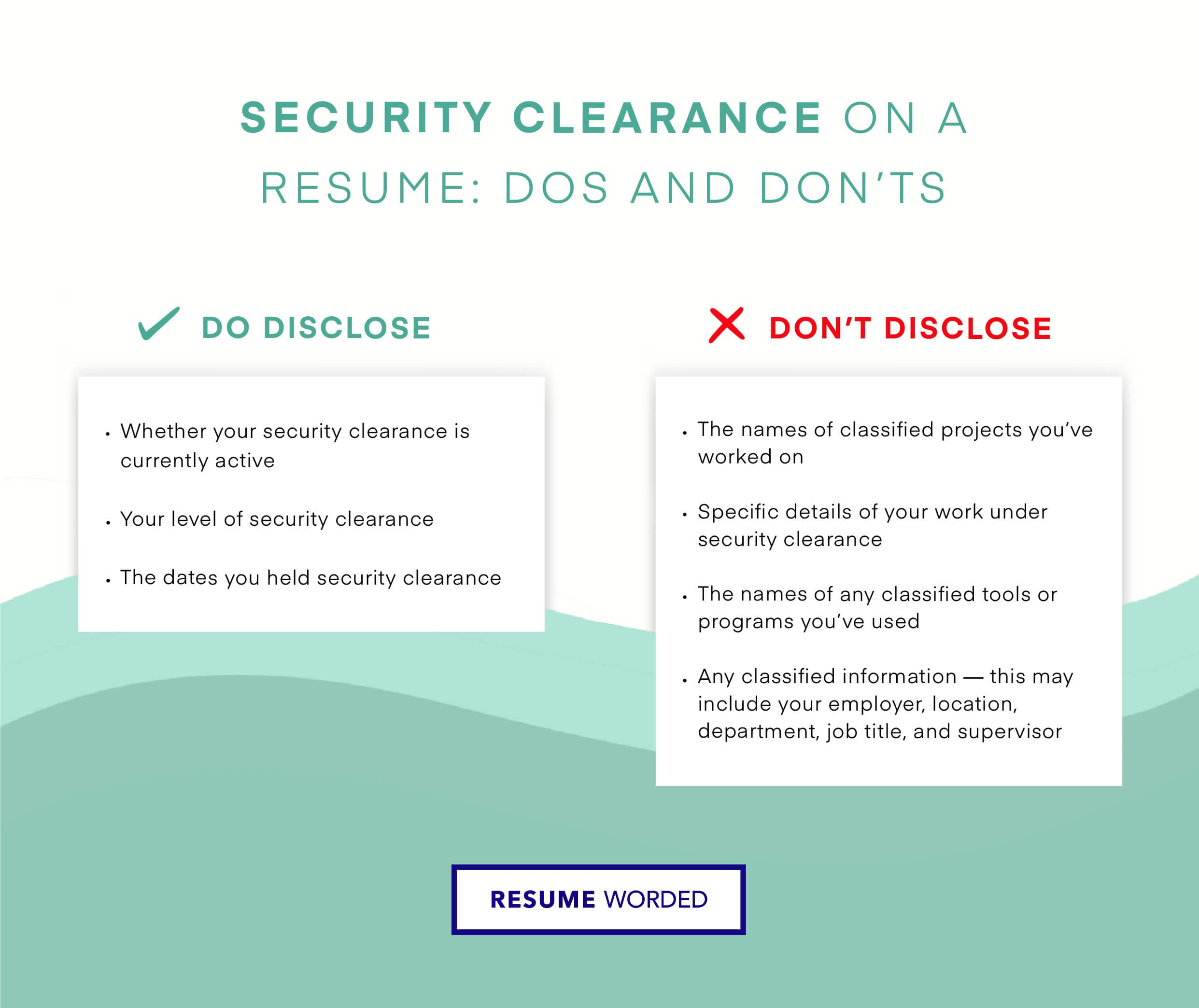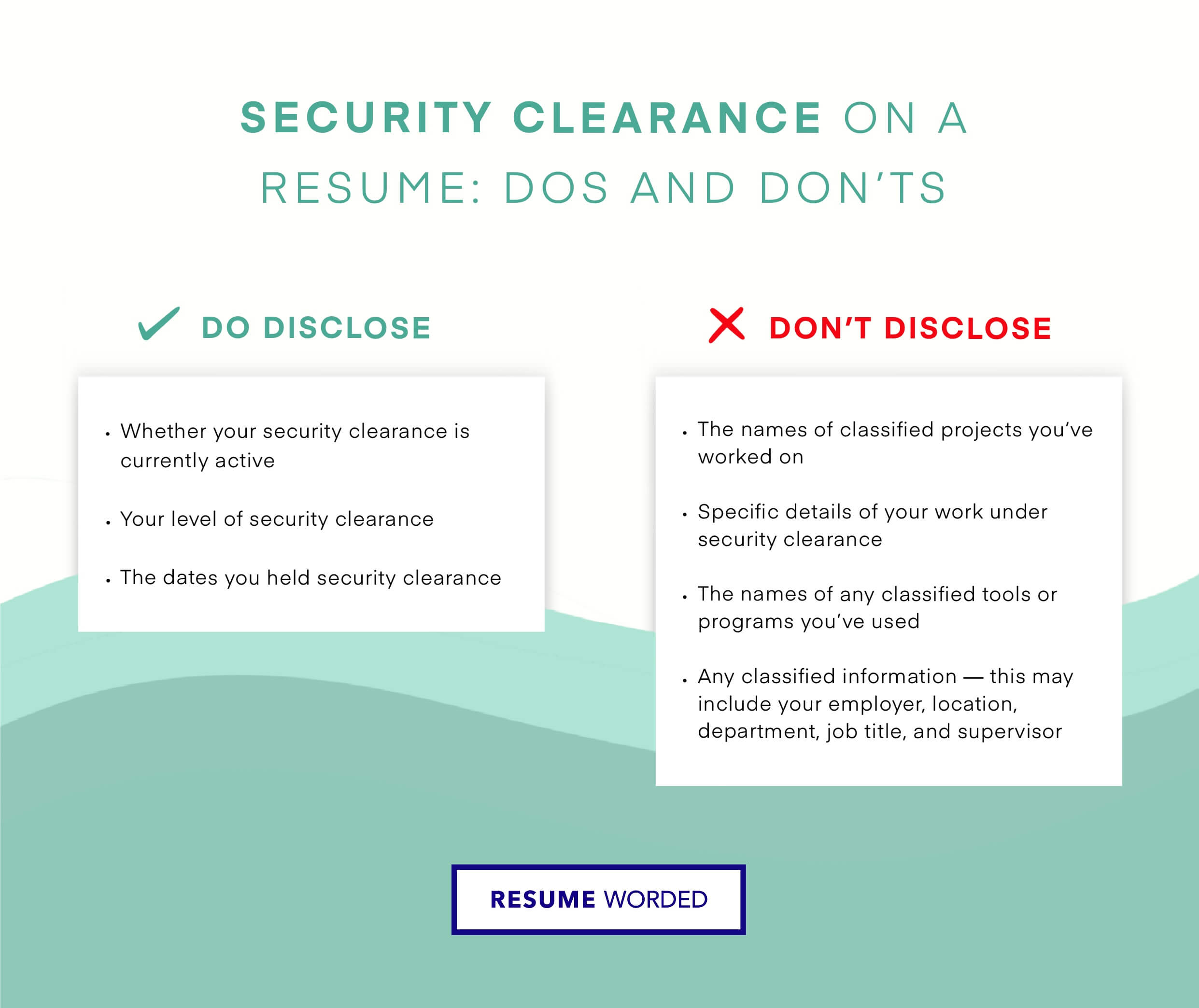

Security clearance isn’t just for international men of mystery. Plenty of jobs — particularly those in the government or military — require security clearance. But what does that involve, really?
In this guide, we’ll discuss when you should (and shouldn’t) disclose security clearance on your resume and show you examples of how to do it. We'll also answer any burning questions about exactly what it means to have security clearance, including different clearance levels and when you need them.
If you just want the facts, you can jump straight to our sections on:
In short, security clearance is a tiered system used in jobs that involve classified information or matters of national security. This often applies to military and government positions but can also cover civilian contractors and jobs in the private sector.
We'll get into more details later, but first, let's go over the basics — exactly what to put on your resume when disclosing security clearance and where to list it.
Not sure how much information you should disclose when listing security clearance on your resume? Here’s what information you should include — and what you should hold back.
Do disclose:
Don’t disclose:

There are a few different ways you can choose to list security clearance on your resume:
Let’s take a look at some examples of what each of those should look like.
If you’re applying for a position where security clearance is essential, it can be best to put that information front and center. To emphasize that you have current security clearance, simply add a line underneath your name but above your contact details that says “Security Clearance.”
Example:
If you’re using a resume summary, that can be the perfect place to mention your current security clearance. This doesn’t have to take up a lot of space — at the end of your resume summary, simply add a line that says “active security clearance” (or, optionally, specify your level of clearance).
Example:
If you don’t feel like adding extra sections — or if working with classified information was a major part of your job — you can also add it to your bullet point accomplishments. Toward the end of your accomplishments, add a bullet point that says something like “maintained active security clearance.” To really drive home your ability to work discreetly with sensitive information, you can include accomplishments relating to your work on confidential projects — without violating any NDAs, of course.
Example:
If you want to get specific about your active (or inactive) security clearance, you can add an additional section toward the end of your resume. This could be a separate “Clearance” section or a “Security Clearance” subheading within an all-purpose “Additional Information” section. In this section, specify your level of security clearance, when you held it, and whether it’s currently active or expired.
Example:
If you’re wondering what else, like security clearance, should or shouldn’t be included on your resume, upload it to the tool below to get a detailed review with suggestions on what you need to add or remove from your resume.
Now that you know how to disclose security clearance on your resume — should you?
Yes, if it’s relevant.
Here are some situations when it can be helpful to list security clearance on your resume:
There are three clearance levels used by the federal government:
Confidential:
Secret:
Top Secret:
There may be two additional types of security clearance required for specific classified information:
Sensitive Compartmented Information (SCI):
Special Access Program (SAPs):
Security clearance isn’t just for people in high-ranking positions. Any job that involves interacting with classified information or high-security settings may require security clearance, from CEOs to administrative and janitorial staff.
In particular, you may need security clearance if you instent to work for:
Exactly what’s involved in security clearance will depend on your role, sector, and level of clearance. Different clearance levels also depend on what industry you’re in — clearance levels used by private companies may not be the same as those used by government agencies.
Note that you can't apply for government-level security clearance on your own — you need to already be in a job that requires security clearance for it to be granted (on a "need to know" basis).
Applications for Classified, Secret, or Top Secret security clearance take into consideration your:
The most common reason for security clearance to be denied is failing a credit check. Other common reasons include criminal records and foreign activities. If you're denied security clearance, you'll notified of the reasons and any avenues for filing an appeal.
You can find more information at the U.S. Department of State website.